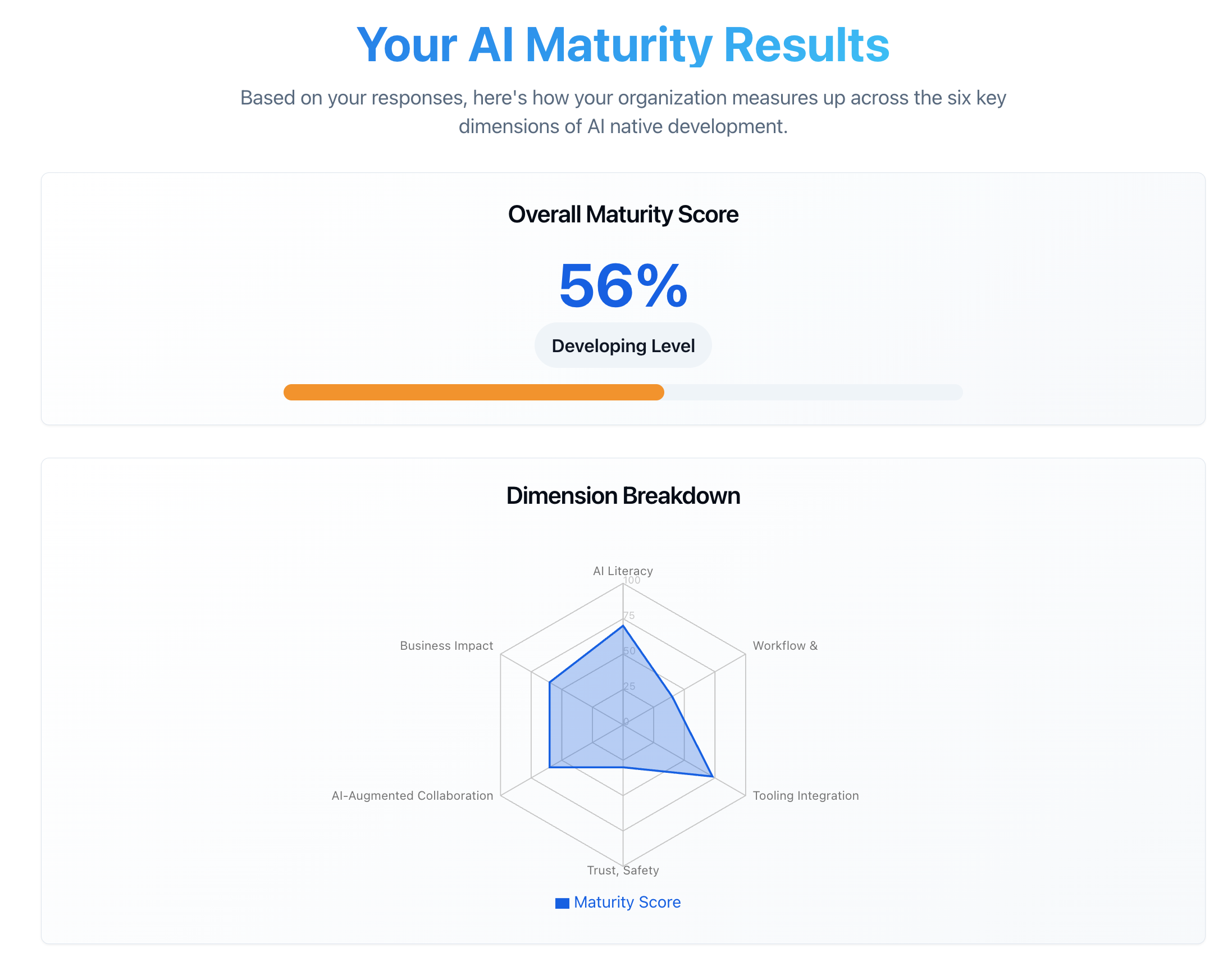A maturity model for AI-Native Development
Most teams “use AI”; few are rebuilding how they ship software. This post defines AI-native development, explains why it matters for leaders, and introduces aidevscore.com—a short assessment that benchmarks six dimensions of maturity.

Introducing https://aidevscore.com
As a software organization, are you “developing using AI” or on a journey to reinvent yourselves around AI-native development? This question is not rhetorical. It has implications across tooling, processes, people, and governance.
The distinction matters. Buying a team license for GitHub Copilot is a purchase. Committing to change how you build software—and what you build—is strategy. Which will have a profound impact on your ability to capture the maximum gains out of this new era of software development.
What AI-native actually looks like
In an AI-native organization, AI agents are integrated into the software development lifecycle. Product managers write structured specifications. From these, agents generate scaffolding, tests, and documentation that engineers review and adjust. Code is produced in the cloud by agents running in containerst and producing pull-requests. Reviews focus on intent, correctness, and safety rather than line-by-line edits. Quality checks run continuously. Governance is implemented as code in the pipeline.
Teams that work this way deliver faster with fewer late defects. Inside the team, more time goes to deciding what (requirements) to build and how to build it (specifications). Less time goes to manual translation and repetitive coding. With such a spec-driven workflow, the specifications become the shared source of truth across design, implementation, and QA.
How well are you doing?
If the above feels science fiction to you, don't worry, most development teams are not there yet! The path is long to move from chatGPT copy-pasting to a complete rebuild of the way you write software.
How far along is your team on this journey? Have you started? Do you have the base knowledge to move safely and quickly? That’s why I built aidevscore.com, a short assessment that benchmarks where you are today and points to the next best step.
Through twelve questions, it looks at six dimensions that together describe how ready a team is to build in an AI-native way: literacy and skills, SDLC integration, tooling coherence, collaboration patterns, trust and safety, and business impact.
The output is simple: an overall label (Emerging, Established, etc.), a radar that shows strengths and gaps, and concrete recommendations you can take to a planning meeting. It’s not a vanity score. It’s a map of where to invest attention first.

Getting started into AI Native Development
If you’re just starting, resist the urge to shop your way into maturity. You won’t get there by deploying a single tool or purchasing a license. The sustainable path requires a complete mindset change from engineers to senior leadership.
The best deployments I’ve seen started with one team experimenting on one product. Greenfield helps, so you don’t take on legacy complexity yet. A frontend slice over existing APIs is a good option, so security and reliability risks are limited while you learn.
Through this first project, you learn the tools and the spec-driven workflow. You also discover the context engineering required for your use case and environment. You discuss risks and limitations openly and begin drafting a company policy.
When the loop is working, expand in depth: upstream into ideation and design, and downstream into quality assurance and operations.
You are not alone
If you run the assessment and want help turning the score into a 90-day plan, I can join for a short strategy session with engineering leadership, or run a hands-on workshop with the teams who will carry this forward. We’ll work with your context and constraints and establish the first two or three practices quickly and safely.
When you’re ready, take the assessment at aidevscore.com. If it surfaces gaps you’d like to close faster, my AI deployment strategy and development team trainings are the next step.
